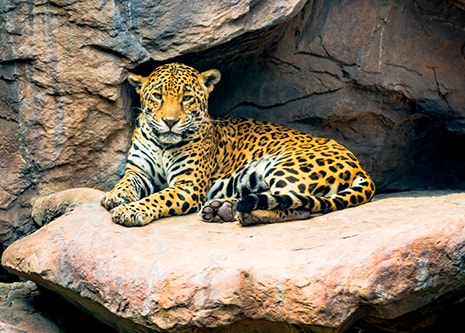
- VisitSupport Happy HollowDONATE TODAYExploreSupport Happy HollowDONATE TODAYLearnSupport Happy HollowDONATE TODAYSupportToday’s Hours: CLOSEDZoo on the Hill
Domestic chicken

Scientific Name: Gallus gallus domesticus
Family: Phasianidae
Order: Galliformes
Class: Aves
Range: Originally from Asia; Domesticated worldwide
Habitat: Urban
Lifespan: 5 to 8 years; some have been known to live up to 20What do they look like?
Domestic chickens vary in size, weight, and color depending on the breed. There are hundreds of chicken breeds, and each breed is categorized either by physical traits, place of origin, and primary use (eggs, meat, or ornamental). Adult male chickens are called roosters and adult female chickens are called hens. Both roosters and hens have a fleshy crest on their heads called a comb and hanging flaps of skin on either side under their beaks called wattles. Roosters, however, tend to have larger combs and wattles, as well as larger spurs on their legs.How do they behave?
Chickens are gregarious birds and live together in flocks. Each flock has a dominance structure which determines which chicken is dominant over the others. They communicate by clucking, and roosters will crow as a territorial signal to other roosters or if there is a disturbance. Chickens are capable of flying short distances, in order to roost or flee from a predator, but generally stay lower to the ground. They spend most of their time scratching and pecking at the ground looking for food, or nesting.What do they eat?
Chickens are omnivores. In the wild, they often scratch at the soil to search for seeds, insects and even larger animals such as lizards, small snakes or young mice. Domestic chickens are typically fed a commercial diet, but can also be given oats, corn, seeds, and variety of vegetation. At the Zoo, the chickens eat specially formulated chicken meal, mealworms, and produce. They also receive chicken grit, which is comprised of small pebbles and shells to aid in digestion.How are they born?
Roosters will often dance in a circle around a hen, lowering the wing that is closest to her, in order to initiate breeding. Over a period of up to two weeks, chickens will lay eggs in a nest until they have a clutch (up to a dozen eggs). After they are done laying eggs, hens will begin to incubate the eggs, causing development to begin. They will sit on the eggs, maintaining constant temperature and humidity and turning the eggs regularly. After an incubation period of about 21 days, all of the eggs will hatch within a few days of each other. The chicks hatch by breaking through the eggshell with their beaks while being stimulated by their mother’s clucking. Mother hens look after their chicks for several weeks and then move on to lay a new clutch. Conservation Connection! Chickens have not been evaluated by the International Union for Conservation of Nature, as a result of their designation as a domesticated species. However, chickens do play a vital role in conservation by helping impoverished communities through the Heifer International program. Heifer International works with rural communities throughout the globe to provide animals to subsistence farmers. These animals support sustainable agriculture and are vital sources of income to the members of their community. You can learn more about Heifer International and their programs at www.heifer.org
Zoo in the Hollow
Follow the crooked bamboo pathway down into the hollow and visit with some of the most amazing animals in the world. Where else in San José can you get up close to a stunning jaguar, lemur, meerkat or American alligator? Happy Hollow is dedicated to helping save species and preserve wildlife for future generations by participating in Species Survival Plan programs through the Association of Zoos and Aquariums.
See Animals
Education Ambassadors
From camps and classes to scout badges and sleepovers, Happy Hollow education programs have something for everyone! The zoo education program offers a broad range of hands-on, engaging programs and public presentations featuring education ambassador animals. These encounters are designed to connect you to wildlife and the conservation of their habitats around the world.
See AnimalsVisit Us Today
Plan an unforgettable experience at San Jose’s family-friendly park and zoo.
Learn More